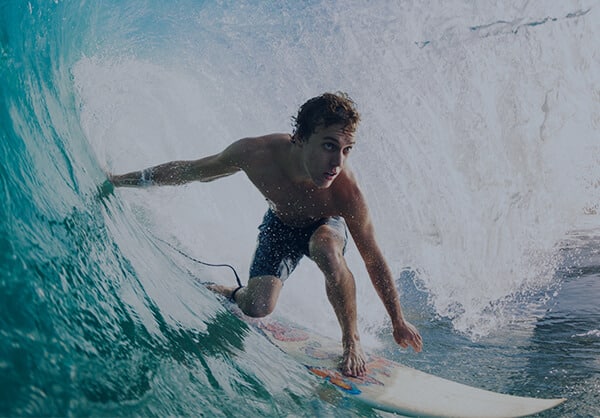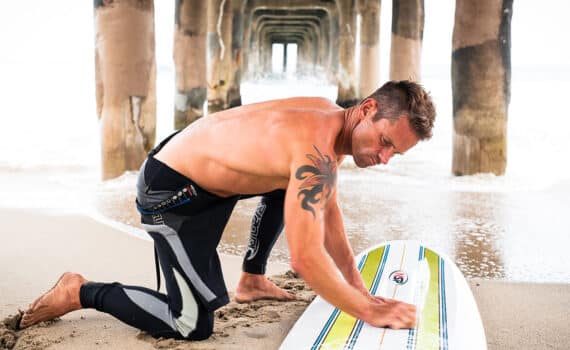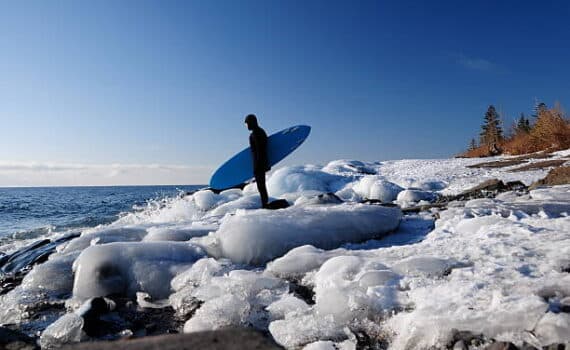Competitive surfing gives you just 20 to 30 minutes to catch your best waves during a heat. Did you know that?
The competition puts you against 2 to 4 other surfers, and every wave matters. Your two highest-scoring rides determine your final score, with a maximum of 20 points possible. Professional judges rate each wave from 0 to 10 based on strict criteria. The World Surf League’s (WSL) detailed 120-page rulebook guides how judges score professional events.
Your competition success depends on understanding this scoring system completely. This piece breaks down everything in surfing scoring and explains the judging criteria. You’ll learn pro strategies that help avoid common mistakes like interference penalties. The information here supports both first-time competitors and experienced surfers looking to sharpen their competitive edge.
Understanding Competitive Surfing
Competitive surfing runs on a well-laid-out format that lets surfers show what they can do in controlled conditions. Here’s how it all works.
What is a heat and how does it work?
A heat is the simple building block of surf competitions. These sessions last 20-35 minutes, depending on the event. Two to four surfers hit the waves at once in a marked ocean area. Their task sounds simple but demands skill: they must catch and perform on the best waves possible.
Wave priority rules decide who gets to ride next. Everyone can go for the first wave. After that, surfers follow a priority order to catch the next wave. Surfers who break these rules and interfere with someone who has priority lose points from their score.
Types of surf competitions
The competitive surf world has different levels and formats:
The World Surf League (WSL) runs the most elite events through two main circuits:
- The Championship Tour (CT): Home to the world’s top 36 male and 18 female surfers
- The Qualifying Series (QS): The pathway to reach the CT
The Olympic Games format packs six rounds that start with early heats and build up to medal matches. Most events use a ladder tournament setup, where surfers move up through rounds until they reach the finals.
How does surfing scoring work?
Five judges score each wave from 0-10. They throw out the highest and lowest scores, and the surfer gets the average of the three remaining marks. A surfer’s heat total comes from their two best-scoring waves, with 20 points being the max score.
Judges look at five main things:
- Commitment and how hard the moves are
- New and progressive maneuvers
- How major moves flow together
- Different types of moves
- Speed, power and flow
The scoring scale breaks down like this: Poor (0-1.9), Fair (2-3.9), Average (4-5.9), Good (6-7.9), and Excellent (8-10). Smart wave choice makes a big difference because quality beats quantity—your two best waves determine if you advance.
When it’s all done, surfers earn points based on where they place. These points add up toward tour rankings and possible world championship titles.
How Surfing is Scored
A panel of five judges uses a detailed scoring system to evaluate surfing competitions. Every competitive surfer needs to know this system to get better heat scores.
Judging criteria explained
The WSL judging system looks at five most important elements when scoring waves:
- Commitment and degree of difficulty – Your willingness to take risks and try challenging maneuvers
- Innovative and progressive maneuvers – Creative and state-of-the-art moves that expand surfing boundaries
- Combination of major maneuvers – The way you connect significant moves together
- Variety of maneuvers – Different moves you perform instead of repeating the same ones
- Speed, power, and flow – These are the foundations of a great score and can make all the difference
Your style doesn’t affect the score unless it impacts your speed, control, or power performance. Judges adjust their expectations based on wave conditions during competition, which creates a sliding scale that fits that specific day.
Scoring scale from poor to excellent
Judges score each wave from 0.1 to 10, using these quality levels:
- 0.0-1.9: Poor
- 2.0-3.9: Fair
- 4.0-5.9: Average
- 6.0-7.9: Good
- 8.0-10.0: Excellent
You get a minimum score of 0.5 just by standing up. The final wave score comes from averaging three middle scores after dropping the highest and lowest judges’ marks.
How your top two waves are counted
Surfers can catch as many waves as they want during their heat. The two highest-scoring waves determine the final heat total, with a perfect score being 20 points.
Wave selection plays a vital role. You might catch ten waves in a heat, but if your best scores are 5 and 6, you’ll end up with 11 out of 20. This system rewards quality over quantity and focuses on excellence rather than number of waves.
Breaking ties at the heat’s end starts with the highest single wave score. If needed, judges will review the highest total of three waves.
Rules That Impact Your Score
Your competition success depends on understanding these significant scoring rules that can make or break your heat performance, beyond just becoming skilled at maneuvers.
Priority system and how it works
Priority determines who has the right of way when multiple surfers want the same wave. No surfer has priority at the start of a heat. The waves work on a first come, first served basis. A surfer moves to the back of the priority line after catching their first wave. This gives others first choice of upcoming waves.
The remaining surfers keep their positions in a four-person heat after the first surfer rides a wave. That surfer gets fourth priority. Colored disks or flags that match your competition jersey color display the priority order clearly.
It’s worth mentioning that surfers with priority have the unconditional right to catch any wave they choose. Other surfers can catch waves too, as long as they don’t affect the priority holder’s scoring potential. You’ll lose your priority position if you paddle for a wave but don’t catch it.
Interference penalties and how to avoid them
You create interference by hindering another surfer’s scoring potential—particularly someone with priority. The penalties hit hard:
- You’ll lose your second-scoring wave completely in priority situations
- Your second-best wave score gets cut in half in non-priority situations
- Disqualification becomes likely with two interferences in one heat
The priority indicator needs checking before paddling for a wave to avoid interference. Give way right away without priority and never “snake” (paddle around another surfer to gain inside position).
Wave selection and ride limits
Only your top two scores count toward your final total even though you can catch many waves in a heat. Wave selection is a vital strategic element—quality matters more than quantity.
Surfers face limits of 10 waves in preliminary heats and 15 in finals in some competitions. Going over these limits leads to penalties. Smart surfers often catch fewer waves. They prefer waiting for high-scoring opportunities instead of wasting energy on average waves.
Successful competitive surfing balances aggressive wave selection with respect for the priority system and awareness of interference risks.
Strategies to Maximize Your Score
Wave selection skills separate average competitors from champions in surfing competitions. Your final score depends on your two best waves, so each choice in the water matters.
Choosing high-scoring waves
Better surfing comes down to picking the right waves. Don’t chase every possible ride. Focus on waves that can score higher:
- Half-built swells let you enter swiftly with minimal paddling effort and save energy for maneuvers
- Stay away from flat swells and closeouts that drain energy and mess up your positioning
- Look for split peaks (A-frames) that give you options to go left or right based on scoring chances
Quality beats quantity every time. A three-foot gem scores better than a six-foot closeout, whatever the conditions. Patience becomes your edge—waiting for quality waves beats catching many average ones.
Timing and positioning in the lineup
Your wave count and scoring chances depend on where you position yourself.
Find “Spot-X”—the perfect takeoff spot where the wave reaches its highest point. This sweet spot changes with conditions. More time spent there means better waves come your way.
Take time to watch wave cycles before you paddle out. Count the waves in each set and time the intervals between them. This helps predict the next set’s arrival. Your knowledge of swell direction lets you position yourself strategically ahead of time.
Adapting to changing conditions
The ocean never stays the same. Successful competitors adjust their approach constantly.
Track tide changes with the “Rule of Twelfths” method to predict how rising or falling tides affect wave peaks. Keep an eye on wind changes that can transform wave quality during your heat.
Bad conditions at your main spot? Have a backup plan ready. A slight position change or moving to a different peak might reveal scoring opportunities others miss. Stay mobile instead of waiting in one spot.
Conclusion – Surfing Scoring
Knowing how to score in surfing competitions will give you the most important competitive edge in any contest. This piece explores everything that makes up the complex world of competitive surfing. So now you understand how judges review your performance based on commitment, breakthroughs, maneuver combinations, variety, and the significant speed-power-flow trinity.
Note that your strategy matters as much as your technical skills. Wave selection is maybe even the most vital factor in your competitive success. Like the priority system, it helps you avoid interference penalties that can get pricey and quickly end your competition dreams.
Your greatest asset in the unpredictable ocean environment is adaptability. Changing conditions just need quick thinking and strategic adjustments to maximize your two best scoring waves.
Success in competitive surfing combines technical skill with strategic thinking. These scoring insights will help your heat totals climb in your next competition. Understanding how judges think and score will lift your performance, whether you’re preparing for local contests or dreaming of WSL competition.
Competitive surfing should definitely stay enjoyable despite its complex rules and scoring systems. Your passion for riding waves are the foundations of your competitive trip. Practice these scoring principles consistently, and you’ll advance through heats with confidence and precision.


